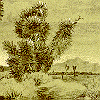

Changing the Face of the Land
Introduction
Tourism, immigration and development which occurred in the southwestern states early in the century brought with them many changes to the landscape. Mining, agriculture, cattle and sheep ranching all created new pressures on the environment. Grasses and flowering plants never before seen in the region competed with the natives, brought in by the railroad, tourists, and in fodder. Mining for gold, silver, and copper transformed mountains while agriculture altered the valleys, and cattle and sheep compromisedthe range.
Water became the limiting factor for these activities to continue, therefore its control became the key to survival. Rivers which had once flown full dried up, and became trickles only after adequate rains. Dams such as the Roosevelt on the Salt River, the Coolidge on the Gila, and the Hoover on the Colorado were built to provide irrigation canals for the crops.
In response to all this development, some tracts of land which were recognized to have intrinsic or representative value, were put aside for preservation. Among these, Saguaro National Monument, Organ Pipe Cactus National Monument, and many others were established. The saguaro, agave, ocotillo, and other representative desert species gained respect from people as their disappearance looked imminent.
We include here a proclamation for the setting aside of Saguaro
National Monument by President J. Herbert Hoover, and a very fragile but
beautiful copper-covered pamphlet produced by the Tucson Chamber of
Commerce. Not to let the cactus get all the glory, there is a copy of a
1901 article written by J.W. Tourney on the Agave, another majestic and
amazing desert attraction. Finally, a testimonial to the desert as a
sanctuary is included.
In order to view the following files you must have an Acrobat Reader.
If you do not possess this software please consult the
About
the PDF link. To view a larger color image of one page of the pamphlet in JPEG, click on any image thumbnail. To view the whole pamphlet as PDF (color or black-and-white), click on the linked call number next to the thumbnail.
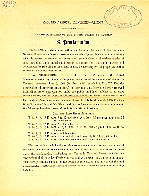 [Herbert Hoover]
[Herbert Hoover]
Saguaro National Monument--Arizona. A Proclamation. By the
President of the United States of America
[Washington, D.C.: U.S. Government Printing Office]
1933, 2 pages
OB9791 Pam. 6 [56 KB]
This document is a description of the location of the Saguaro National Monument and the means by which it shall be preserved, signed by President Herbert Hoover.
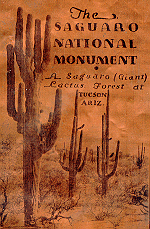 [Tucson Chamber of Commerce]
[Tucson Chamber of Commerce]
The Saguaro National Monument
[Tucson, Arizona: Tucson Chamber of Commerce]
Circa 1930s, 4 pages
OB9791 Pam. 12 [1.6 MB]
This copper-covered pamphlet is a delicately produced santimony to the giant cactus, the Saguaro. It provides a description of the monument and a brief life history of its sentinel plant. It includes two color paintings of flowers from other familiar cacti, the Hedge Hog Cactus and Barrel Cactus.
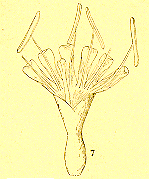 J.W. Toumey
J.W. Toumey
An Undescribed Agave from Arizona
1901, 4 pages
OB9791 Pam. 22 [0.2 MB]
This article, written by J. W. Tourney, describes the Agave treleasii found on the southern slopes of the Santa Catalina Mountains outside of Tucson. He gives a brief anatomical description and provides two plates of plant parts and habit.
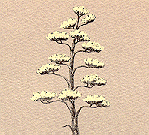 [E. "Eddie" I. Edwards]
[E. "Eddie" I. Edwards]
Desert Sanctuary
Homer H. Boelter Lithography
Circa 1980s, 13 pages
C9791 Pam. 127 [1.2 MB]
This pamphlet contains reflective prose brought out by the landscape of the desert. It is written by E. "Eddie" I. Edwards, and illustrated by Homer H. Boetler. The illustrations reflect the prose by their appearance of isolation and sense of space. Both the narrator and the artist capture the magnificence of the desert by including different aspects of its splendor.
Introduction | Accessibility | Advertising | Agriculture | Architecture | Entertainment | Environment
Exotic | Health | Indigenous Culture | Railroads | Religion | Roads
